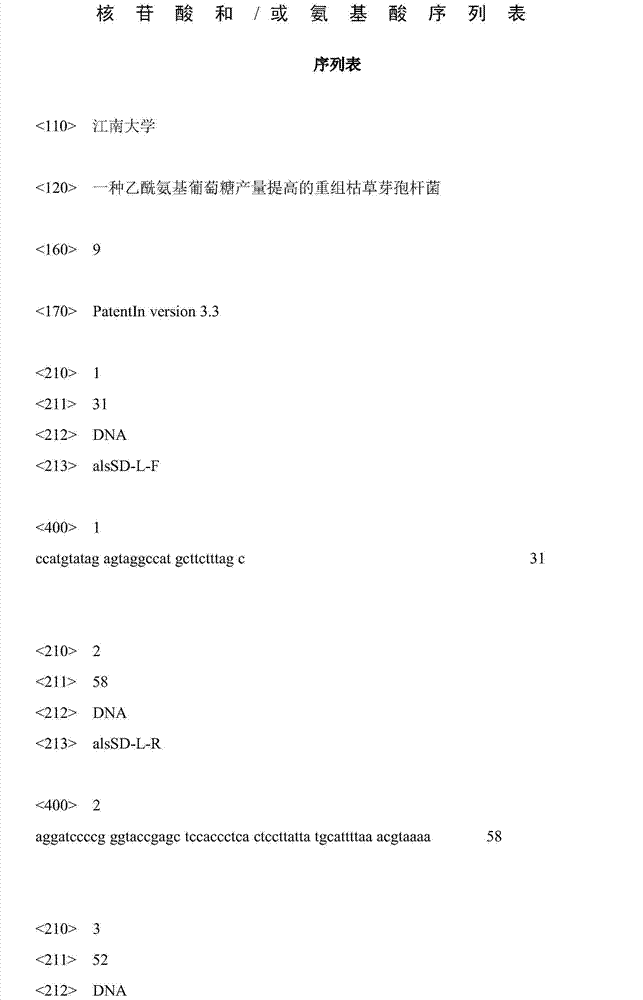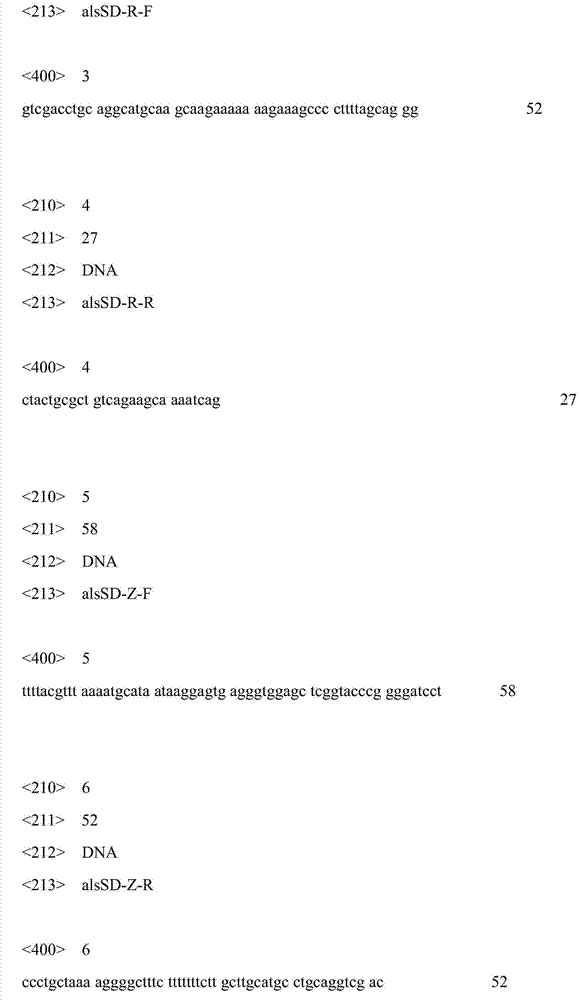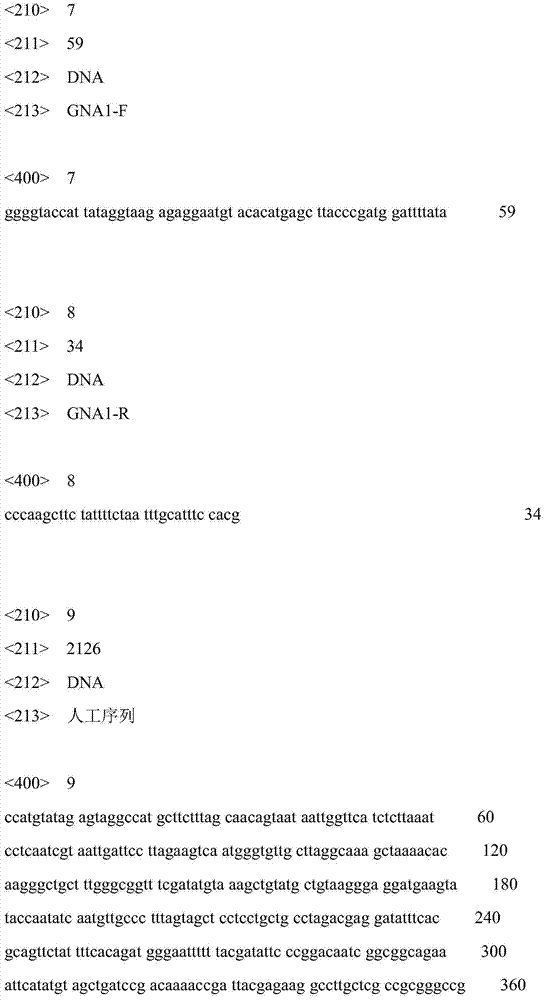Recombinant bacillus subtilis increased in yield of acetylglucosamine
A technology of Bacillus subtilis and glucosamine, which is applied in the field of genetic engineering, can solve problems such as serious environmental pollution, and is not suitable for people with seafood allergies, and achieves the effects of simple construction method, good application prospect and easy use.
- Summary
- Abstract
- Description
- Claims
- Application Information
AI Technical Summary
Problems solved by technology
Method used
Image
Examples
Embodiment 1
[0018] Example 1 Knockout of the gene encoding α-acetolactate synthase (alsS) and the gene encoding α-acetolactate decarboxylase (alsD)
[0019] According to the upstream and downstream sequences of the gene encoding α-acetolactate synthase (alsS) and the gene encoding α-acetolactate decarboxylase (alsD) of Bacillus subtilis 168 (ATCC No.27370) published on NCBI, design knockout frame homology arms Amplification primers, left arm upstream and downstream primers are: alsSD-L-F: 5'-CCATGTATAGAGTAGGCCATGCTTCTTTAGC-3' and
[0020] alsSD-L-R:
[0021] 5'-AGGATCCCCGGGTACCGAGCTCCACCCTCACTCCTTATTATGCATTTTAAACGTAAAA-3'; the upper and lower primers of the right arm are: alsSD-R-F:
[0022] 5'-GTCGACCTGCAGGCATGCAAGCAAGAAAAAAAGAAAGCCCCTTTTAGCAGGG-3' and alsSD-R-R:5'-CTACTGCGCTGTCAGAAGCAAAATCAG-3'. The left and right arms contained in the knockout frame were amplified from the Bacillus subtilis 168 genome using the above primers. According to the p7Z6 plasmid sequence published on NCBI ...
Embodiment 2
[0025] The construction of embodiment 2 recombinant Bacillus subtilis
[0026] Transform the constructed knockout frame into Bacillus subtilis BSGN6-P xylA -glmS, through bleomycin resistance plate screening and colony PCR verification, it was confirmed that the gene encoding α-acetolactate synthase (alsS) and the gene encoding α-acetolactate decarboxylase were successfully knocked out, and the recombinant Bacillus subtilis BSGN10 was obtained.
[0027] According to the glucosamine acetylase coding gene (GNA1) in Saccharomyces cerevisiae S288C (ATCC 204508) published on NCBI, the primer GNA1-F was designed:
[0028]5'-GGGGTACCATTATAGGTAAGAGAGGAATGTACACATGAGCTTACCCGATGGATTTTATA-3', GNA1-R: 5'-CCCAAGCTTCTATTTTCTAATTTGCATTTCCACG-3'. The glucosamine acetylase encoding gene (GNA1) was amplified from the Saccharomyces cerevisiae S288C genome using the above primers. The amplified fragment was digested with KpnI and HindIII and then ligated into pP43NMK expression vector. Restrict...
Embodiment 3
[0030] Example 3 Fermentative production of acetylglucosamine
[0031] The seeds cultivated at 37° C. and 200 rpm for 12 hours were transferred to the fermentation medium at an inoculum size of 5%, and cultivated at 37° C. and 200 rpm for 48 hours. After 48 hours of fermentation, the content of acetylglucosamine in the fermentation supernatant reached 38.46g / L, which was 27.1% higher than that of the control bacteria without alsS and alsD knockout (30.25g / L). This was achieved by knocking out the genes encoding α-acetolactate synthase (alsS) and α-acetolactate decarboxylase (alsD), and overexpressing the gene encoding glucosamine acetylase (GNA1) in nagP knockout hosts. Enhanced extracellular production of acetylglucosamine in recombinant Bacillus subtilis.
PUM
 Login to View More
Login to View More Abstract
Description
Claims
Application Information
 Login to View More
Login to View More - R&D
- Intellectual Property
- Life Sciences
- Materials
- Tech Scout
- Unparalleled Data Quality
- Higher Quality Content
- 60% Fewer Hallucinations
Browse by: Latest US Patents, China's latest patents, Technical Efficacy Thesaurus, Application Domain, Technology Topic, Popular Technical Reports.
© 2025 PatSnap. All rights reserved.Legal|Privacy policy|Modern Slavery Act Transparency Statement|Sitemap|About US| Contact US: help@patsnap.com



